Introduction to Human Anatomy and Physiology – Flashcards
Unlock all answers in this set
Unlock answersquestion
branch of science concerned with structure of the body
answer
anatomy
question
branch of science that deals with functions of living organisms and their parts
answer
physiology
question
standing straight, facing forward, arms at sides with palms forward
answer
anatomical position
question
toward the head, upper
answer
superior
question
away from head, below
answer
inferior
question
toward the front, in front of
answer
anterior
question
What is another term for the anterior part of the body?
answer
ventral
question
toward the back, behind
answer
posterior
question
What is another term for the posterior part of the body?
answer
dorsal
question
toward the midline of the body, on the inner side
answer
medial
question
away from the midline of the body, on the outer side
answer
lateral
question
closer to the point of attachment
answer
proximal
question
farther from the point of attachment
answer
distal
question
close to surface of body
answer
superficial
question
toward interior of body
answer
deep
question
making up the main axis of the body (head, neck, trunk)
answer
axial
question
consisting of appendages or limbs
answer
appendicular
question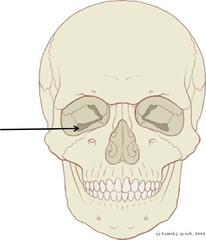

answer
orbital
question

answer
acromial
question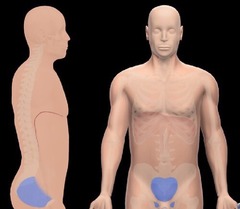

answer
pelvic
question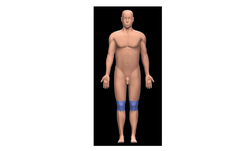

answer
patellar
question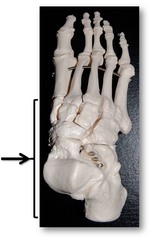

answer
tarsal
question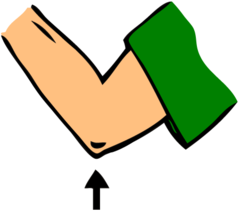

answer
cubital
question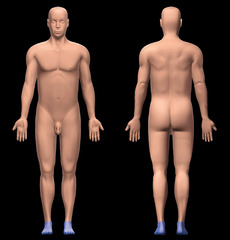

answer
pedal
question
vertical plane, dividing into left and right sides
answer
sagittal
question
divides equally into right and left halves
answer
midsagittal
question
divides unequally into right and left sides
answer
parasagittal
question
divides into superior and inferior sections
answer
transverse
question
divides into anterior and posterior sections
answer
coronal
question
major, closed compartment containing internal organs.
answer
body cavity
question
also includes oral, nasal, orbital, and middle ear cavities
answer
cranial cavity
question
contains the spinal cord
answer
vertebral cavity
question
includes the thoracic and abdominopelvic cavities
answer
ventral body cavity
question
surrounds organs of the chest, such as heart and lungs
answer
thoracic cavity
question
houses a lung
answer
pleural cavity
question
in the center of the thoracic cavity; it contains the pericardial cavity housing the heart, esophagus, and trachea
answer
mediastinum
question
contains the cranial cavity and vertebral canal (cavity)
answer
dorsal body cavity
question
cavity of the trunk below the diaphragm
answer
abdominopelvic cavity
question
contains stomach, liver, spleen, intestines, etc...
answer
abdominal cavity
question
contains bladder, some reproductive organs, rectum...
answer
pelvic cavity
question
large, dome-shaped muscle separating the thoracic and abdominopelvic cavities.
answer
diaphragm
question
movement, responsiveness, growth, reproduction, respiration, digestion, absorption, circulation, assimilation, excretion
answer
characteristics of life
question
atoms > molecules > cells > tissues > organs > organ systems > organisms
answer
levels of structural organization
question
sum of all chemical reactions that happen in the body
answer
metabolism
question
water, food, oxygen, heat, pressure
answer
five requirements of life
question
dynamic condition in response to changing conditions, maintains a relatively stable environment
answer
homeostasis
question
maintains value of condition within normal range
answer
negative feedback system
question
if change outside of normal occurs, this feedback makes the change greater
answer
positive feedback system
question
monitors value of a condition, senses changes
answer
receptor
question
establishes set point around which condition is maintained (brain)
answer
control center
question
can change value of a condition (gland or muscle)
answer
effector
question
lubricating fluid between the parietal and visceral membranes
answer
serous fluid
question
membrane covering the surface of the lungs
answer
visceral pleura
question
membrane covering the surface of the heart
answer
visceral pericardium
question
membrane covering the cavity surrounding the lungs
answer
parietal pleura
question
membrane covering the cavity surrounding the heart
answer
parietal pericardium
question
membrane covering the surface of the abdominal organs
answer
visceral peritoneum
question
membrane covering the cavity surrounding the abdominal organs
answer
parietal peritoneum
question
consists of the heart and blood vessels, responsible for transporting oxygen and nutrients throughout the body
answer
cardiovascular system
question
a group of organs including stomach, intestines, and liver working together to convert food into energy and basic nutrients to feed the entire body
answer
digestive system
question
glands, like the thyroid and pituitary, that secrete hormones to regulate the body
answer
endocrine system
question
made of of skin, hair, and nails; protects the body from damage such as loss of water or infection
answer
integumentary system
question
contains lymphatic vessels, lymph nodes, and spleen; it transports fluids from tissues and includes the immune system
answer
lymphatic system
question
permits movement of the body, maintains posture, and circulates blood
answer
muscular system
question
coordinates body activities by transmitting signals throughout the body; contains brain and spinal cord
answer
nervous system
question
allows for the production of offspring for the continuation of the species
answer
reproductive system
question
contains lungs and air passageways to allow for gas exchange
answer
respiratory system
question
structural system that performs various functions such as, support, protection, and calcium storage
answer
skeletal system
question
includes kidneys and bladder functioning to filter the blood to remove waste
answer
urinary system



